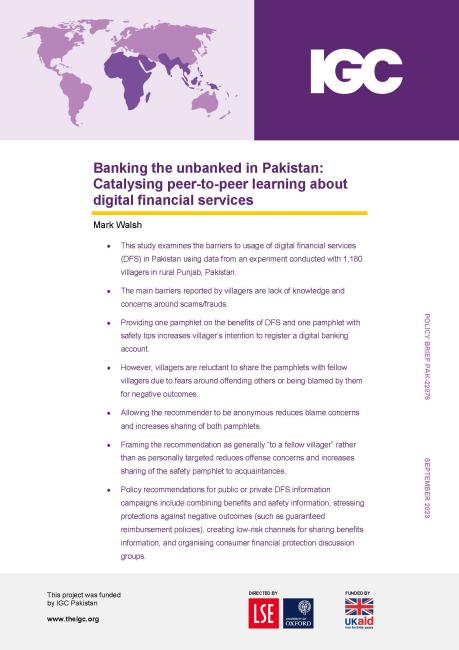Understanding peer effects in platform industries: Experimental evidence from digital merchant payments in Pakistan
This project investigates the impacts of peer effects, using this knowledge to learn ways of strategically utilising peer effects to influence uptake on different platforms. This project specifically focuses on the peer effects on digital merchant payments with a field experiment to identify exactly what the peer effects are that influence merchants.
The information technology revolution has created new possibilities for consumer-to-consumer, consumer-to-business or business-to-business interactions through digital platforms. Unfortunately, many platform industries stagnate at low levels of adoption or become dominated by a few firms who use their market power to raise prices and mistreat users.
These patterns can be explained by strong network or peer effects- where a user’s expected value from adopting a given platform depends on the behaviours and beliefs of others. In this project I will focus on peer effects in one specific industry- digital merchant payments.
These payments allow consumers to pay merchants digitally using systems like mobile money, reducing cash dependency, increasing convenience, transparency, tax compliance, access to credit and downstream digitisation.
Policymakers attempting to understand whether and how peer effects affect digital merchant payments face two significant challenges- it is difficult to separate the effect of one’s peers from other factors and peer effects arise through multiple channels.
I am proposing a field experiment in Lahore, Pakistan to identify peer effects in merchants’ adoption of digital payments and the relative importance of the channels. I will vary merchants’ information about the preferences and adoption of other merchants as well as the adoption of consumers.
This variation will allow me to identify the peer effects influencing merchants’ adoption decisions and estimate the influence of the following three channels: learning from peers’ preferences, peers’ adoption increasing the value of performing in-platform interactions and peers’ adoption increasing the value of a platform for other reasons such as conformity.
My results will enhance policymakers’ ability to unlock the benefits of digital merchant payments and other platforms through the strategic use of peer effects.



